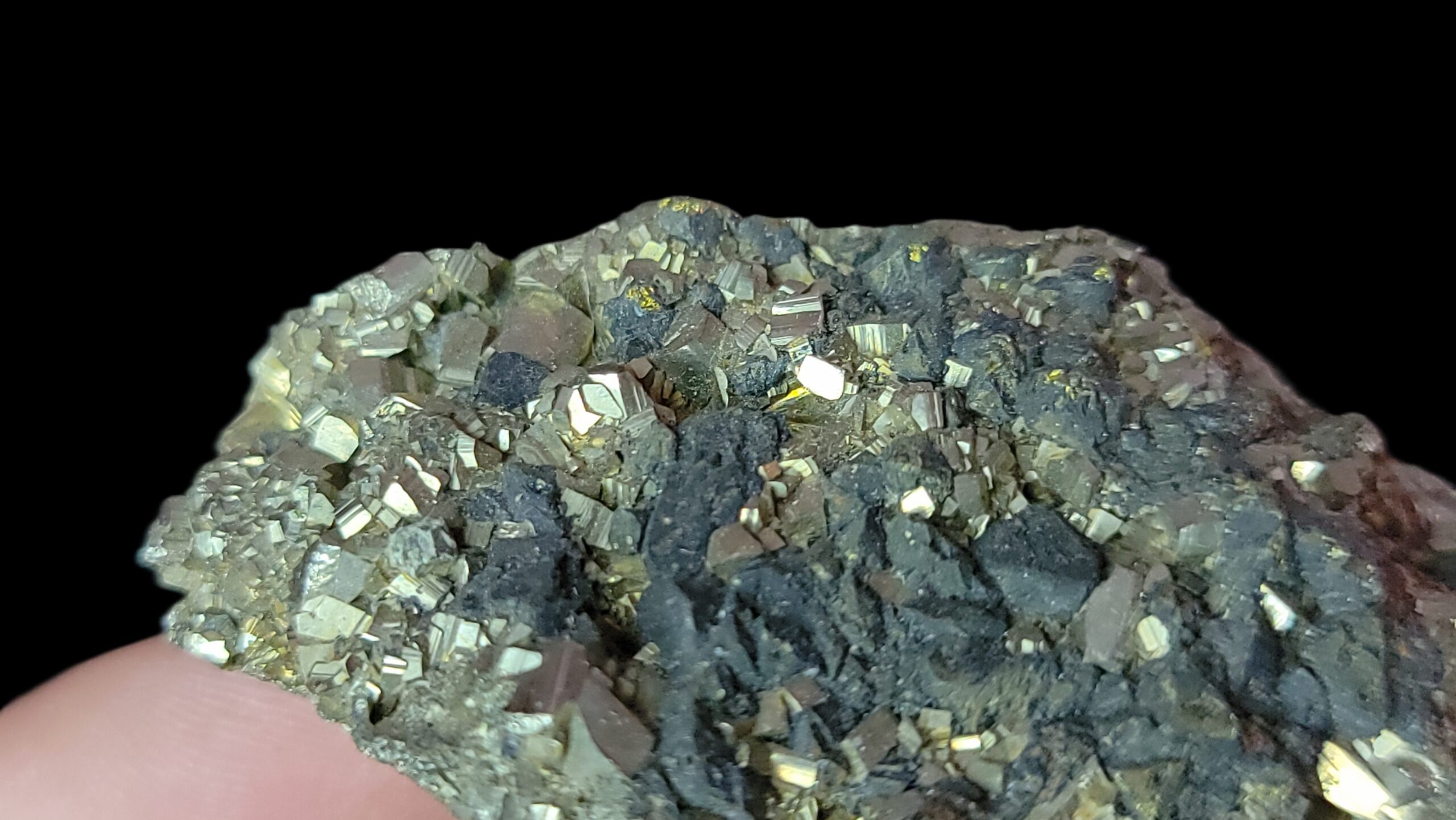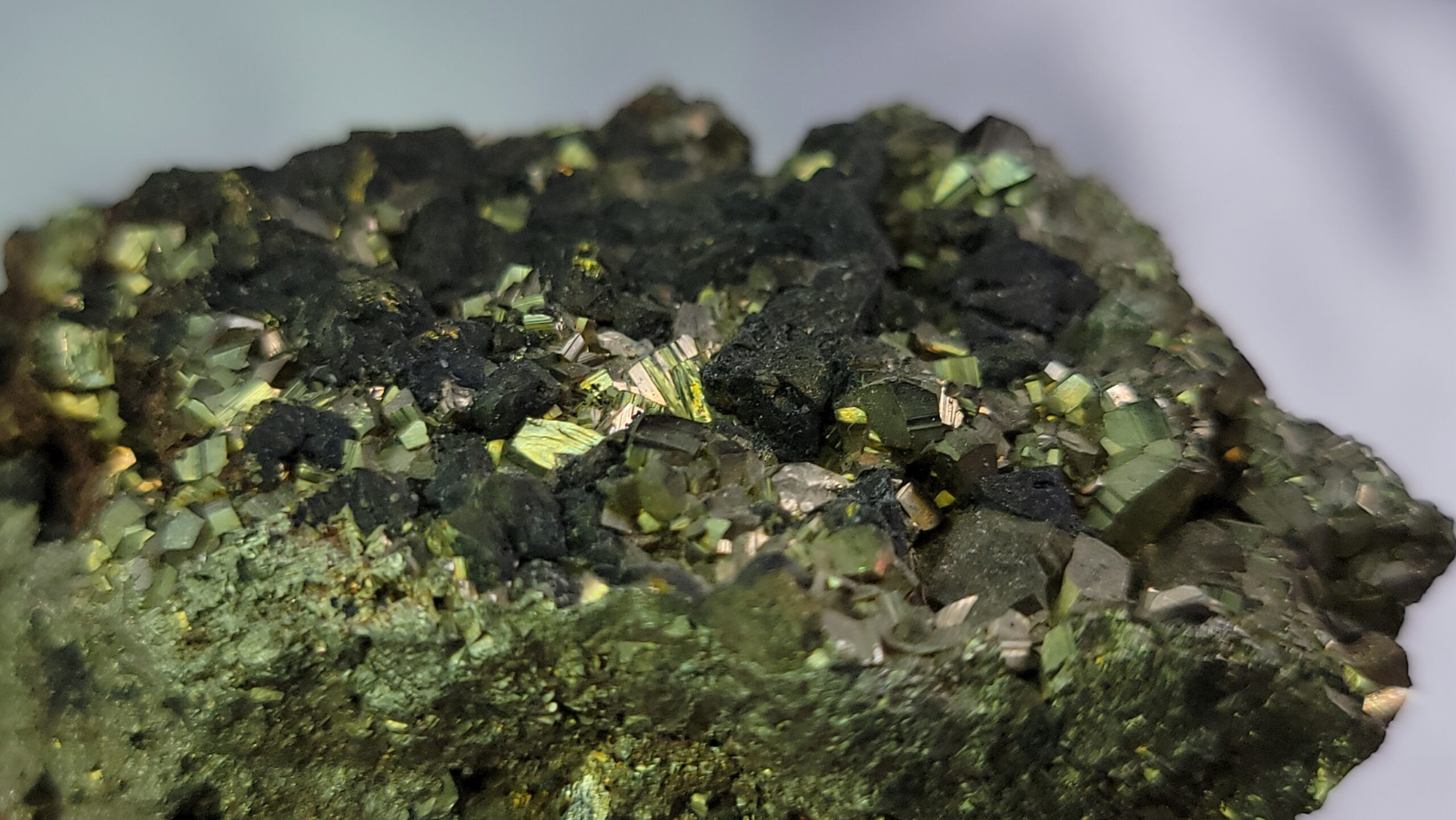Description
Chalcopyrite has a hardness of 3½ – 4 and a specific gravity of 4.1 – 4.3, Pyrite has a hardness of 6 – 6½ on the mohs scale and has a specific gravity of 4.8 – 5, and Sphalerite is just as hard as Chalcopyrite at 3½ – 4 and it has a similar specific gravity as well recorded at 3.9 – 4.1.
Sphalerite was “originally called blende in 1546 by Georgius Agricola (Georg Bauer). Known by a variety of chemical-based names subsequent to Agricola and before Glocker, including “zincum”. Named Sphalerite in 1847 by Ernst Friedrich Glocker from the Greek σφαλεροζ “sphaleros” = treacherous, in allusion to the ease with which dark varieties were mistaken for galena, but yielded no lead” according to Mindat, and following that story, it seems Sphalerite may be one of the most aptly named minerals! WebMineral shows a sample analyzed at 64% Zinc, 33% Sulfur, and 3% Iron.
Chalcopyrite was named in 1725 by Johann Friedrich Henckel, and gets its name from the Greek words “chalkos”, for copper, and “pyrites”, for strike fire. There’s quite the group of minerals when it comes to pyrites, but this is definitely one of the most common, for sure, with more than 31,884 recorded localities on Mindat! It’s usually found “in hydrothermal veins, disseminations, and massive replacements; the principal copper mineral of porphyry copper deposits” according to Mindat. Also stated on that page is that Chalcopyrite is the “most abundant copper-bearing mineral and is widespread.” WebMineral shows a sample they analyzed at nearly a 33% split between Iron, Sulfur and Copper.
Pyrite was “named in antiquity from the Greek ‘pyr’ for ‘fire’, because sparks flew from it when struck with another mineral or metal and known to Dioscorides (~50 CE) under the name ‘περι υληζ ιατρικηζ’ which included both pyrite and chalcopyrite” according to Mindat. Pyrite has been found in more than 46,704 recorded on Mindat.
Also from Mindat, Sphalerite was “named in 1847 by Ernst Friedrich Glocker from the Greek σφαλεροζ ‘sphaleros’ = treacherous, in allusion to the ease with which dark varieties were mistaken for galena, but yielded no lead. Originally called blende in 1546 by Georgius Agricola (Georg Bauer). Known by a variety of chemical-based names subsequent to Agricola and before Glocker, including ‘zincum’.”
You can find Pyrite, Sphalerite, and Chalcopyrite in many places around Colorado, and the rest of the world, so no matter where you may find yourself hiking, be sure to keep an eye out for a rock like this and you’ll possibly be able to identify either Pyrite, Sphalerite, and/or Chalcopyrite, and possibly just strike it rich while stumbling into your next Zinc/Copper mine, and possibly some other metals as well! While you can’t go to the Eagle Mine to get anymore specimens like this, you can still bring home this one!















Reviews
There are no reviews yet.